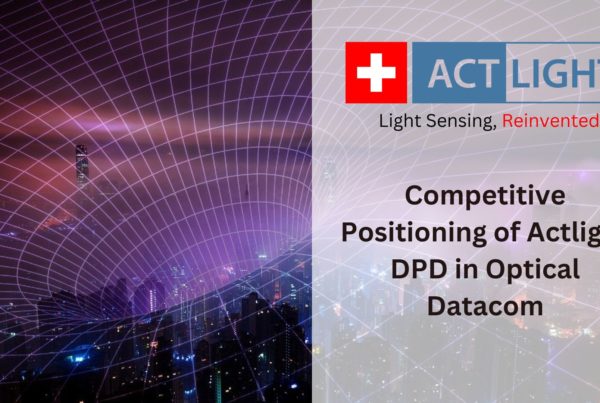Discovering the Untapped Potential of Ambient Light Sensors
In a recent issue of Science Magazine, researchers unveiled a groundbreaking revelation: the unsuspecting ambient light sensor in your smartphone or tablet possesses a clandestine capability for espionage. Every modern smartphone and tablet, alongside numerous laptops and TVs, houses this component. Originally designed to gauge ambient light levels and adjust screen brightness accordingly, this unassuming sensor has now been uncovered as a potential tool for snooping on unsuspecting users.
But why would a threat actor resort to such an unconventional method instead of exploiting the device’s built-in camera? The answer lies in the vulnerability of these seemingly innocuous sensors. Unlike heavily guarded components like microphones or cameras, ambient light sensors often lack robust security measures. Imagine a scenario where a user unwittingly installs malicious software on their smartphone. While the malware might struggle to breach fortified components, gaining access to the light sensor is a walk in the park.
The researchers demonstrated that this humble ambient light sensor can serve as a substitute for a camera, capturing critical information such as a user’s PIN input on a virtual keyboard. Through meticulous analysis of this data, the researchers showcased the potential to reconstruct entire passwords. In this blog post, we delve into the intricacies of this discovery, unraveling its implications in layman’s terms.

Unlocking the Potential of Light Sensing Technology
At its core, a light sensor is a primitive yet powerful device. Functioning as a light-sensitive photocell, it measures ambient light brightness several times per second. While traditional digital cameras employ similar light sensors on a much larger scale, the essence remains the same: capturing images pixel by pixel. But how can such a rudimentary device capture the nuances of its surroundings?
The breakthrough lies in the application of the Helmholtz reciprocity principle, a fundamental concept dating back to the 19th century. Leveraging this principle, the researchers devised a method reminiscent of dual photography. By manipulating light intensity and recording corresponding changes in illumination, they successfully reconstructed images from the perspective of the light source itself.
Remarkably, this technique doesn’t necessitate a conventional camera. A simple photoresistor, akin to those found in ambient light sensors, suffices. Termed as a “single-pixel camera,” this device measures light reflections from objects, enabling the construction of rudimentary photographs. Although the resulting images boast low resolution, with hundreds or thousands of measurements, they offer valuable insights into the target environment.

Practical Applications and Limitations
Returning to the study, the researchers conducted experiments using a Samsung Galaxy View tablet equipped with a 17-inch display. By displaying various patterns on the screen and capturing changes in brightness using the ambient light sensor, they effectively transformed the tablet into a rudimentary camera. However, the resultant images, albeit informative, suffered from low resolution and required extensive processing to discern relevant details.
While the potential for espionage is evident, practical implementation poses significant challenges. Real-time surveillance, essential for nefarious activities, remains unfeasible due to the method’s slow speed. Moreover, the requirement for prolonged hand immobility undermines its applicability in real-world scenarios. Despite these limitations, the sheer ingenuity of the proposed method warrants acknowledgment.
Implications for Privacy and Security
This research serves as a poignant reminder of the hidden capabilities lurking within everyday devices. While the prospect of privacy invasion is unsettling, practical considerations temper its feasibility. By adjusting the frequency of sensor measurements, the risk of unauthorized surveillance can be mitigated without compromising functionality.
ActLight’s Dynamic PhotoDetector: Revolutionising Light Sensing Technology
In light of these revelations, ActLight’s Dynamic PhotoDetector (DPD) technology is designed to push the boundaries of sensitivity, ActLight’s DPD technology redefines light sensing capabilities. Whether integrated into wearables, smartphones, or augmented reality devices, ActLight’s solutions empower businesses to unlock new dimensions of creativity and engagement.
With concerns about the security of patents in recent cases, ActLight’s IP is also robust. Learn more about this in another post.
Conclusion
As we navigate the ever-evolving landscape of technology, it’s imperative to remain vigilant of the hidden potentials and pitfalls that accompany innovation. While the revelation of ambient light sensors as potential spy tools may raise concerns, proactive measures can mitigate risks and safeguard user privacy. ActLight’s commitment to advancing light sensing technology underscores the transformative potential inherent in responsible innovation.
To learn more about licensing ActLight’s Dynamic PhotoDetector, don’t hesitate to reach out directly to our Chief Commercial Officer Roberto Magnifico.
#privacy #smartphones #wearables #ambient #lightsensor






